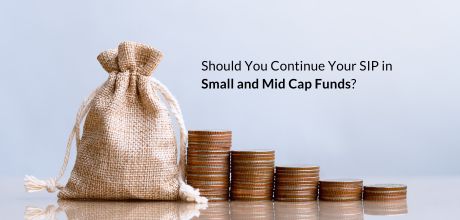How to use Mutual Funds for Retirement Planning

Mutual Funds offer flexible, customizable options for efficient Retirement Planning at various stages.
When it comes to Retirement Planning, Mutual Funds Sahi Hai! There’s no investment instrument that’s as flexible and customizable as Mutual Funds, that can be adapted to optimize your Retirement Planning goal at its various stages. Here’s a simple guide to using Mutual Funds to achieve your Retirement Planning Goal effectively and efficiently.
The Early Stages: SIPs in Equity Funds
The best time to start planning for your Retirement is when you take up your first job and receive your first pay check. After all, the moneys you put away at this stage of your life will have not years, but decades to compound and grow! During the early stages of your Retirement Planning, make sure you run SIP’s (Systematic Investment Plans) in aggressive funds such as small & mid cap funds, without paying much heed to market volatility or even your own risk tolerance.
The Mid Stages: Aggressive Step Ups
When you’ve spent a decade or so in your career, you’ll likely start witnessing dome serious bump-ups in your income levels. This is the time that you should be stepping up your monthly SIP amounts aggressively. Unfortunately, left to your own devices, you’ll probably keep putting off this well-intentioned step up for a ‘better time’. A solution to this procrastination is to issue a standing instruction to the Mutual Fund to increase or “Step Up” your monthly SIP instalments every year automatically.
Pre-retirement: STP’s into Debt Funds
When you’re 3-5 years away from your retirement, you’ll likely have accumulated a sizeable corpus if you’ve been disciplined in running your Mutual Fund SIP’s. However, your priority right now will be to safeguard your hard-won capital and ensure no erosion in its value. Therefore, this is the time that you should say “Debt Mutual Funds Sahi Hai” and start STP’s (Systematic Transfer Plans) from your Equity Mutual Fund investments to lower risk fixed income funds! By staggering your investment out of equity funds, you’ll end up averaging your exit cost, and ensuring that you get a fair value for your units and don’t risk cashing out at the bottom of a cycle.
Post Retirement: SWP’s from Debt Funds
Once you’ve retired, the lion’s share of your corpus will be parked into debt-oriented mutual funds, and your overarching objective will be to generate a reliable, constant income stream from it to meet your day to day expenditures. For doing this, you should start an SWP (Systematic Withdrawal Plan) from your debt funds, to the tune of your monthly requirement. SWP’s are a tax-efficient means of generating post-retirement income and are highly flexible. With proper planning, they should help you sail through your retirement years comfortably!
Your Investing Experts
Relevant Articles
How To Select The Best Mutual Funds For Long Term Goals
Mutual funds offer a compelling way to invest for long-term goals, leveraging professional management and diversification to potentially achieve significant returns. But with a vast array of options available, selecting the best mutual funds for the long term can feel daunting. This guide will equip you with the knowledge to confidently navigate the mutual fund landscape and learn how to select the best mutual fund aligned with your long-term aspirations.
Should You Continue Your SIP in Small Cap Mutual Funds
Investing in small cap funds requires patience and discipline, especially during market corrections. By staying committed to your SIPs and focusing on long-term goals, you can leverage the power of rupee cost averaging and compounding. Don’t let short-term market noise dictate your strategy—remain focused, stay the course, and trust that your disciplined approach will yield results over time.
Systematic Withdrawal Plans (SWP): A Reliable Way to Generate Regular Income
An SWP allows investors to withdraw a predetermined amount from their mutual fund investments at regular intervals, such as monthly, quarterly or annually. The beauty of SWPs lies in their flexibility—they provide consistent income while allowing the remaining investment to continue growing.
.png)


_(2).jpg)